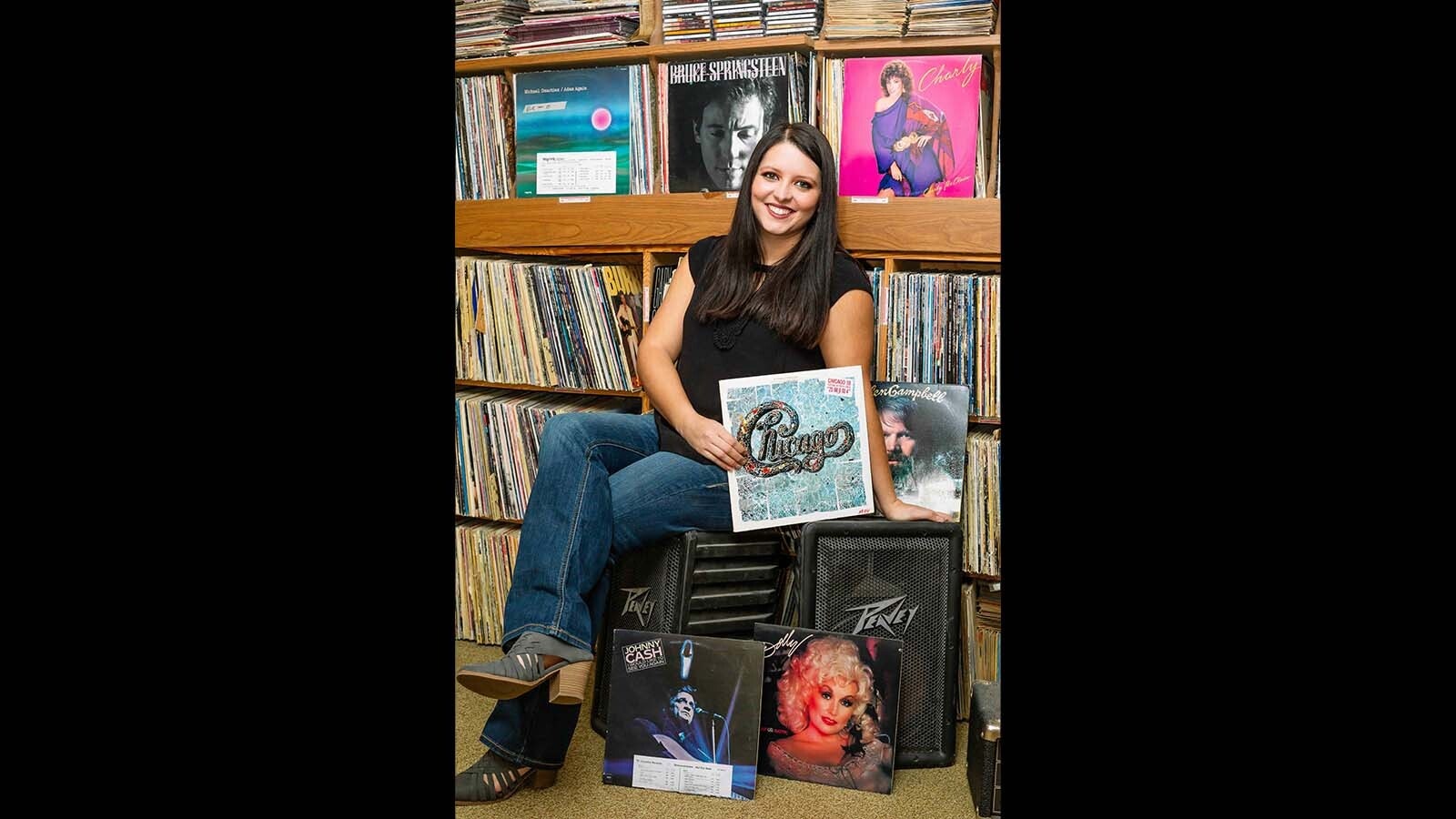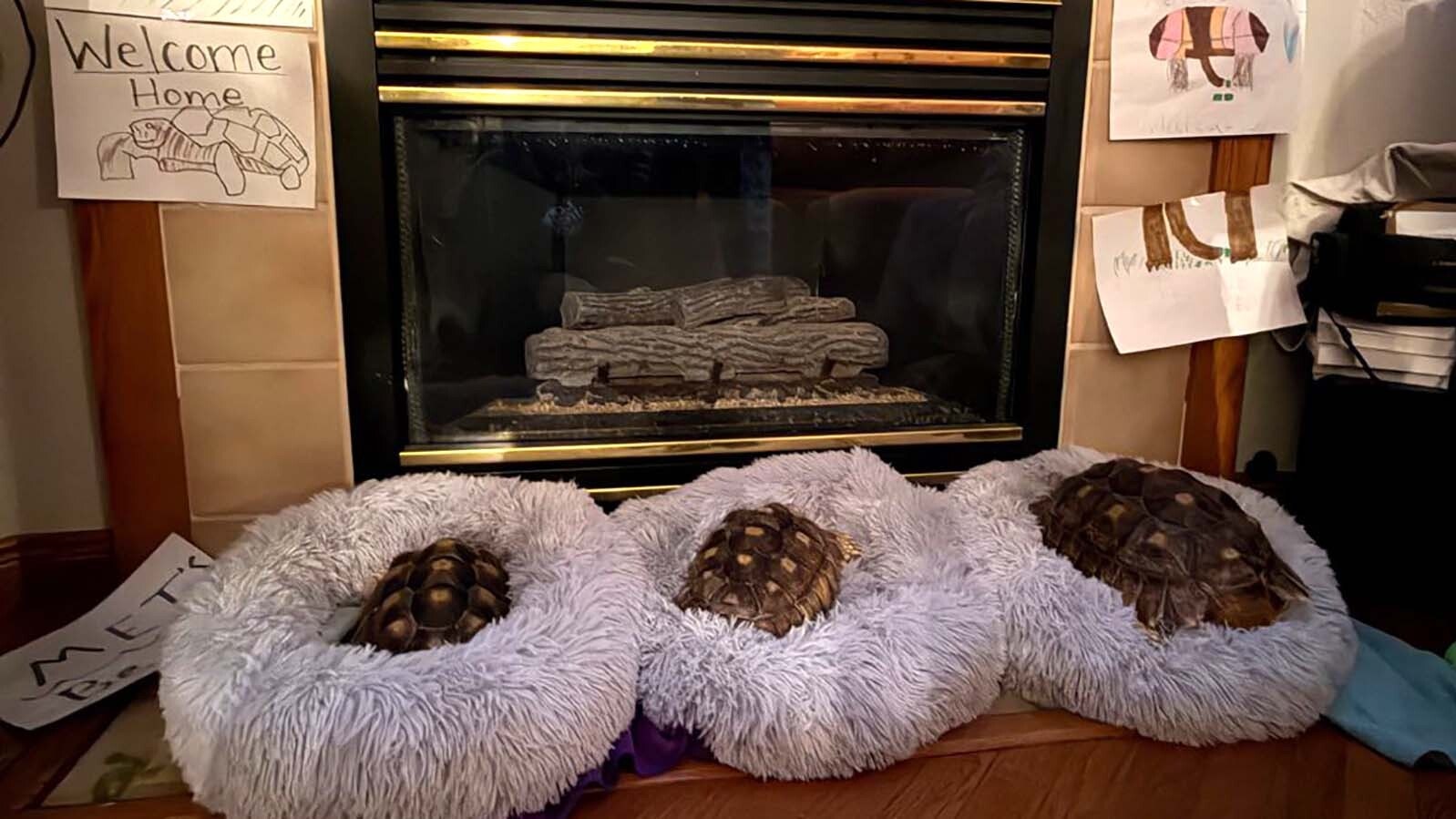Across Wyoming, commercial radio station managers are challenged to find the right mix between cost-saving satellite and automated programing and live local programming.
The challenge: finding the sweet spot between economic reality and audience demand for genuine local content.
In Powell, Alyssa Short, who runs four Heart Mountain Broadcasting stations alongside her mother and father April and Sam Rodriguez, exemplifies this balancing act.
Their stations — KPOW, KBEN, KHMN, and KROW — still rely on automation to pipe in syndicated shows like Sean Hannity and Glenn Beck, but Short said the company has made deliberate choices about where to invest in the human touch.
"We could pay into automation and have the same top 40 basically as what Sirius XM has. We could buy into that and listen to the same 40 songs every hour," Short told Cowboy State Daily. "Or we can create our own library, which is what we do have.
"All four of our stations have our own music library, and we program them daily."
While her AM station KPOW relies on automation for syndicated talk shows from Fox News, Short has made strategic choices about where to invest in local programming — particularly on the FM stations' music side.
The approach has resonated with listeners tired of repetitive playlists.
"We've gotten a lot of positive feedback saying that it's so nice that you don't hear the same song every hour," Short said. "We have a program where we don't even hear the same song but maybe once a week."
But Short's vision and ear extend beyond music variety. It's about reclaiming radio's original purpose as a community connector, she said.
"Our goal is to take radio back to how it was intended to be: community driven, community minded," she said. "If a community member wants to listen to a certain Christian song, a certain classic country song, a certain classic rock song, call us and if it fits our demographics, we'll play it."
The human touch extends to lost animals — a surprisingly common metric for measuring local radio engagement.
“We've had several people say, ‘Hey, we lost a horse.’ I mean, let's be realistic around here," she said. “We are the information station.”
For some listeners, said Short, calling the local radio station in Powell is better than Googling anything. The station routinely gets calls asking about local events and the phone numbers for area businesses.
When it comes to competing with satellite radio, Short frames it as an economic choice for her community: Pay for a satellite radio subscription or support local radio.
"Sirius is $30 a month and we live in a place where $30 is a tank of gas for somebody," she explained, positioning free, local radio as both a community service and a competitive advantage.
This time of year, part of the appeal is radio’s connection to local high school sports, with the stations broadcasting live coverage of the Powell Panthers and Cody Broncs.

Lost Dogs
Jackson Hole Radio includes stations KMTN, KCJH, KJAX, and the Spanish-language format station La Nueva.
Its owner, Scott Anderson, also brings up pets when explaining local radio's enduring value in the digital age.
"When their dog goes missing and they want to find it, they don't call Spotify," Anderson said. "They call us."
That simple observation encapsulates what Anderson sees as radio's competitive advantage in an era of infinite entertainment options. After years of consolidation that "killed a lot of localism" in mid-sized markets, Anderson believes the pendulum is finding a middle ground.
"I think most stations are trying to keep a more traditional profile than just going straight to complete automation and AI and all that kind of stuff," Anderson noted. The challenge is finding the right balance for each market.
"The best way for local radio to be discerned from the nationwide digital media is by being live and local and embracing local content and local people and really hammering that home," Anderson explained. "That's the way we differentiate ourselves from Spotify and everywhere else."
For Anderson, it’s ensuring radio stations are more than "just a blinking box."
Dusty Records
For Douglas Broadcasting and its lead station KKTS, Dennis Switzer has developed what he calls his recipe for success: Leverage the existing technology to be as local as you can be.
After 45 years in the business, Switzer has watched automation evolve from room-sized reel-to-reel systems to cloud-based platforms, and he's learned to use every tool available while maintaining local presence.
His record collection may be gathering dust — "They never see the light of day," he admits about the vinyl albums and CDs lining his studio walls — but his connection to the community remains strong, he said.
"Local, local, local, local, local," Switzer said, acknowledging it's been the industry buzzword for years.
But then he adds an important caveat: "I think relevant is more important than local. And local is always important, but local may not be particularly relevant."
Switzer runs news updates three times an hour, 24/7 — a commitment that he hopes sets him apart.
"What makes me different? What makes me important to my listeners?" he asked. "In a world where a lot of radio stations only do news in morning drive, I do news three times an hour.”
The technology has transformed what it means to broadcast local voices.
During a Panama Canal cruise last spring, Switzer broadcast his morning newscasts from the ship, signing off with "reporting off the coast of Colombia on Royal Caribbean's Symphony of the Seas."
His listeners loved it, he said. Years earlier, he produced commercials from his son's living room in Nairobi, seamlessly integrating them into his stations' programming via Dropbox and automation systems.
But Switzer is clear about one thing: the latest technologies are just tools.
"A chainsaw is a tool. And if I give you a chainsaw, you can cut down a tree, or you can take a tree stump and carve it into a piece of art, or you can cut your leg off," he explained.
His approach to small-market radio is pragmatic: "To do really good radio in little towns like Douglas, you have to use the tools, you have to use them well. And you do have to use smoke and mirrors and make it sound bigger than it is."
Switzer gets his music from a service in Denver that provides five windows an hour for local content. He uses automation extensively but strategically inserts local news, weather and community information throughout the day.
He said it’s about knowing when to let the machines run and when human intervention adds irreplaceable value.

Radio Survives
Bob Dakin, chief operating officer of the Big Horn Basin Media network of stations based in Cody, brings a different perspective shaped by his Iowa childhood and a lifelong fascination with radio's reach.
Growing up, he was captivated by what he calls "blow-torch" radio—those powerful stations broadcasting from just over the border in Mexico that "brought Wolfman Jack into the world."
"At nighttime you'd get WLS Chicago, KAAY Little Rock, Arkansas, KOMA Oklahoma City," Dakin recalled of his youth spent tuning into AM stations from across the country. That childhood wonder has evolved into concern about the future of AM radio itself.
"They want to take AM radio out of the cars," he said, expressing dismay about automakers like Tesla potentially removing AM capabilities from future vehicles.
For Dakin, radio has survived every supposed killer — from eight-tracks to satellites.
"People thought that in the ‘60s when they started putting in eight tracks in some of the Lincolns and Cadillacs," he said. "Then cassettes came out and then CDs and then that time they thought, well, here comes satellite radio."
Despite all the technological changes, Dakin believes in radio's fundamental appeal: that "one-on-one relationship that people have."
He's particularly aware of small-market radio's unique services.
"One of the bigger elements in a small market... people listen for obituaries," he noted. "As crazy as that sounds, it's true."
They also tune in when bad news hits a community by surprise.
"I hate to say it, when something bad happens, unfortunately, that's when radio has some of its best shining moments," he said, citing natural disasters and emergencies when local radio becomes essential.
John Baggett, who stepped down as a radio marketing manager in Sheridan after working for iHeart Radio, has watched the industry transform from "very local, locally owned and operated to big-time corporate.”
Baggett hosted the Saturday morning show for Cowboy State Daily. He sees stations finding a new equilibrium through unique local offerings and awareness.
"If I'm driving between here and Buffalo and we got whiteout conditions and they're closing the exit up there at Piney Creek Road, they're not going to tell me that on XM Radio," Baggett said.
The statistics support what these Wyoming broadcasters are experiencing. According to the latest RTDNA/Newhouse School at Syracuse University Survey, 70.5% of all radio stations now report running local news, an increase of 6.3% from the previous year.
Commercial stations increased their local news offerings by 10.3%, while locally owned stations are now more likely to produce news than non-locally owned stations. This doesn't mean abandoning automation — it means finding strategic moments for human presence within automated programming.
“Last year around this time we had that Elk Fire," Baggett recalled. "They had a big bump or boost in listenership. They wanted to hear about what was going on with this massive fire."
For Baggett, there's also what is known as "companionship radio" — the human connection that no algorithm can replicate.
"There are times when we want to be accompanied by somebody," he explained. "The old-fashioned morning show, you know the goofballs in the morning if you're traveling big, long distances, it's kind of nice to be accompanied by somebody."
Looking at the competitive landscape, Baggett is philosophical.
"There's probably not as many listeners to radio as there used to be, but everybody else has the same issue," he noted, describing the seemingly limitless offerings when it comes to music, information and entertainment. "Their audience is spread thin as well. So, if you're an app, you're competing against Spotify, Sirius, XM, iHeart."
The opportunity for local radio is clear to him: "Radio still has that companionship... That's where good old fashioned broadcast local radio comes in handy."
David Madison can be reached at david@cowboystatedaily.com.






